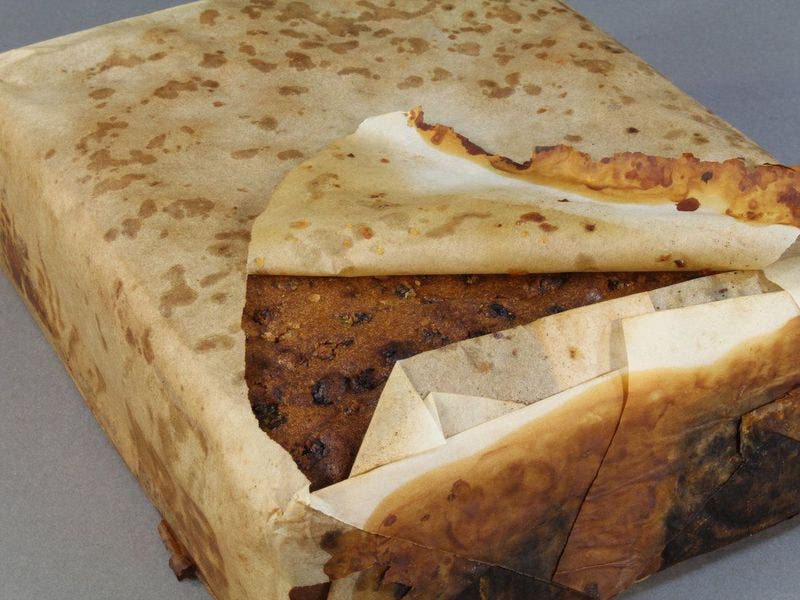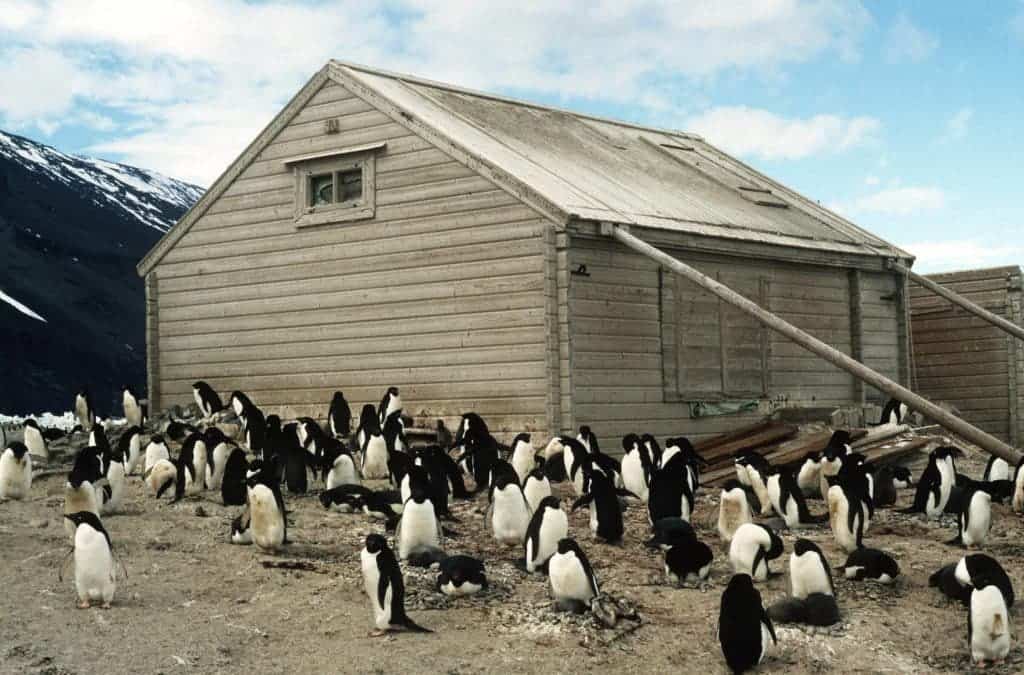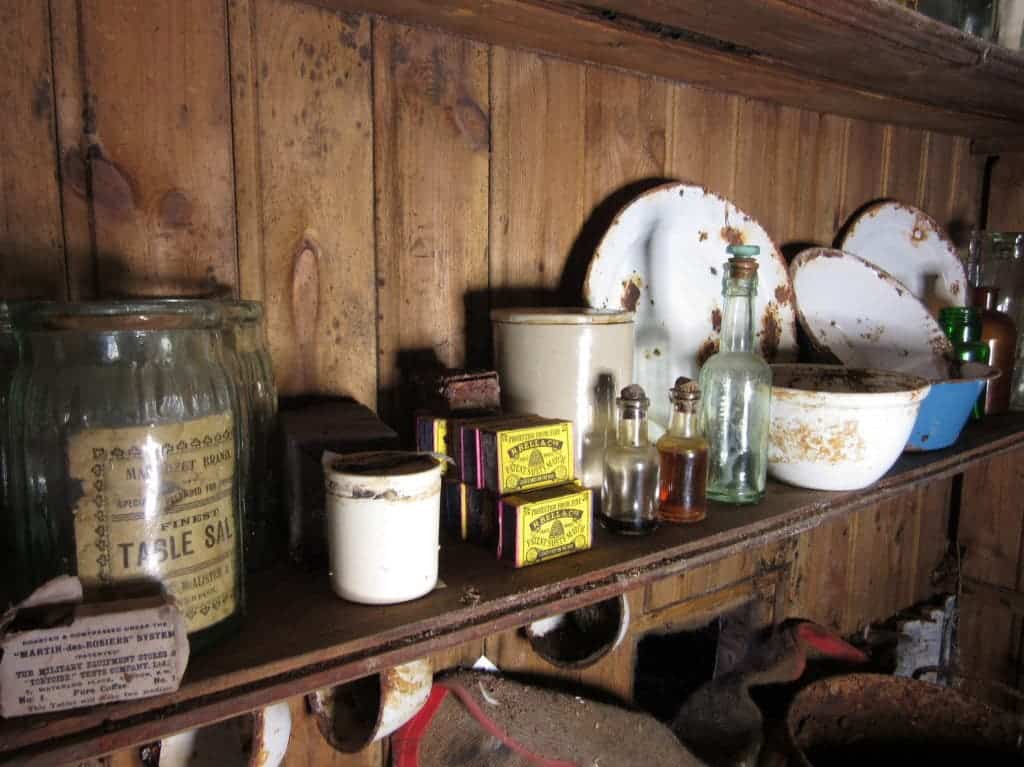No one touched it for more than a century, not even the penguins.

More than a century ago, someone at a British company called Huntley & Palmers (which still exists today) made a fruitcake. Robert Falcon Scott took a few cakes on his ill-fated expedition to the Antarctic in 1910, as he aimed to be the first person to reach the South Pole. Now, conservationists at the Antarctic Heritage Trust have found it among 1,500 artifacts inside buildings that were constructed at Cape Adare, Antarctica.
The fruitcake was gently wrapped in wax paper, grease stains still visible. It was left in original, now corroded, tin — as quintessentially British as it was more than a century ago, and potentially still edible.
“There was a very, very slight rancid butter smell to it, but other than that, the cake looked and smelled edible!” the Trust’s Programme Manager-Artefacts Lizzie Meek said in a statement. “There is no doubt that the extreme cold in Antarctica has assisted its preservation.”

According to the Trust, the first buildings on the continent “were built by Norwegian Carsten Borchgrevink’s expedition in 1899 and later used by Captain Scott’s party in 1911.” The team was rounding up these objects when they were surprised to come across the dessert. They figured it belonged to Captain Scott’s party because there were mentions of them having this particular brand.
Having such foods in the freezing Antarctic is a good idea — you need all the calories you can get. As NPR’s Maria Godoy has reported, people doing outdoor work in the Antarctic need about 5,000 calories a day, even more if you’re doing a lot of physical work. So having a sweet, calorie-packed dessert makes a lot of sense.
“The last objects were a handful of unidentified and severely corroded tins. Finding such a perfectly preserved fruitcake among them was quite a surprise. It’s an ideal high-energy food for Antarctic conditions, and is still a favourite item on modern day trips to the Ice.”

The cake wasn’t the only surprise the Trust found at the site. Earlier this year, they had discovered a very detailed watercolor painting of a Tree Creeper, which was painted by Scott’s unfortunate chief scientist Edward Wilson. Like Scott and the rest of the expedition, Wilson never made it back home. They succumbed to the white desert and froze a mere 11 miles from shelter.






